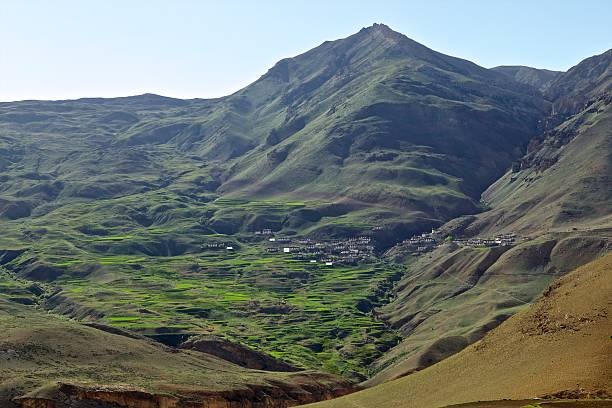
Kinnaur & Spiti Valley, Himachal Pradesh
A journey through 3 very different valleys of the Indian Himalayas: Kinnaur, Spiti and Kullu, to discover Tibetan culture and Buddhist traditions.
From Shimla and the Kinnaur valley, a spectacular road leads to the high Spiti valley. It is a world apart, hidden in a lost valley of the Indian Himalayas, and remained secret for a long time. Nicknamed “Little Tibet“, this region is a true conservatory of Tibetan culture and Buddhist traditions. From village to monastery, a trek of average difficulty (5 stages) allows us to discover sumptuous desert mountain landscapes and meet the mountaineers who breed goats and yaks.
Highlight of the tour
Chandigarh, Shimla and the Kinnaur Valley
Buddhist Monasteries and Himalayan Villages
Magnificent Arid Mountain Landscapes
Spectacular Spiti to Manali Road
Alpine Kullu Valley.
Accommodation: small hotels, 8 nights in tents during the trek.


Detailed Program
Day 1: Arrival New Delhi IGIA Airport
Upon arrival New Delhi Indira Gandhi International Airport, met and greet by our staff. Welcome at the airport and transfer to the city. Depending on the arrival time, night at the hotel or direct transfer to the station. (Standard Check in time is 14H00)
Day 2: Delhi – Chandigarh – Shimla
Early in the morning, departure by train for the city of Chandigarh (3h30 journey), built according to the plans of the Swiss architect Le Corbusier. Visit the extraordinary park of statues of Rock Garden then drive to Shimla, a high-altitude station (2200m) in Himachal Pradesh, built by the British in the middle of the 19th century, and summer capital of the Indian Empire (140km, and 4h drive). If the weather permits, climb through the forest to the temple of Jhaku Hill, dedicated to the monkey god Hanuman, which offers a magnificent view on a clear day. Night at the hotel.
Day 3: Shimla – Sarahan
Road to Kufri and Narkandha, before descending to Rampur (1000m), one of the great commercial centers of Himachal Pradesh.
Then drive to Sarahan (1920m), former summer capital of the Rajah of Rampur facing the Shirkhand range, 190km, 5 hours drive. Visit the superb stone and wood temple dedicated to the goddess Bhima Kali. Night at the hotel.

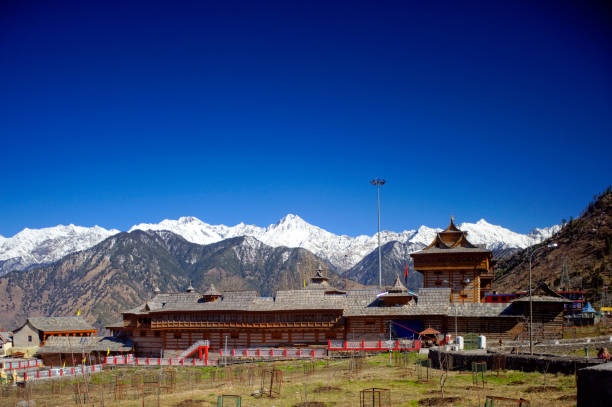
Day 4: Sarahan – Sangla
Along the Sutlej gorges, drive to Wangtu, gateway to Kinnaur. At Karcham (1800m), turn off for the Baspa valley, one of the most picturesque Kinnauri valleys. In Sangla (2600m), walk (30min) in the village and towards the fort of Kamru which dominates it. In the afternoon, drive to the last villages of the valley. Discovery on foot of Chitkul (3450m) and Rackchham, pretty villages with traditional wooden houses. 140km, 6h drive. Night at the hotel in Sangla.
Day 5: Sangla – Kalpa
Walk in the villages of the valley, before joining the main road, and the village of Recong Peo (2300m). On the way, visit a monastery built at the top of the city, offering a breathtaking view of the Kinner Kailash, sacred mountain sheltering, according to beliefs, the abode of Shiva. 80km, 4h drive. Night at the hotel in Kalpa (2750m).
Day 6: Around Kalpa
Passage to the checkpoint which issues permits to access the border regions with Tibet. Discovery of the villages of the region, Kothi and its temple dedicated to the goddess Devi Chanadika, Roghi (2700m) in the middle of the apple trees. Walk in Chini, where Hindu and Buddhist cultures blend harmoniously, visit the small monastery of Hu-Bu-Lan-Ka. Night at a hotel in Kalpa. 2 hours of walking.
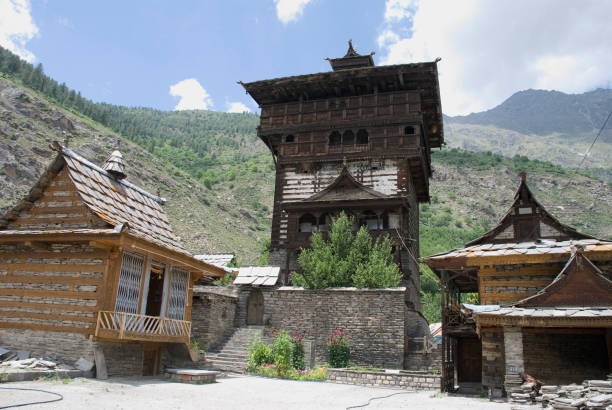

Day 7: Kalpa – Tabo
After passing a passport control post allowing access to the upstream part of the valley, our minibus goes up the Sutlej gorges, then the Spiti river. Stop at Nako, walk in this small Tibetan-style village, located at 3600m in a very beautiful site around a lake in the middle of barley fields, near an old monastery. In the early afternoon, arrival at the village of Tabo. 160km, 7 hours of driving.
Tabo Monastery, founded in 996, contains exceptional frescoes and stucco statues. Called the Ajanta of the Himalayas, it is the largest monastic complex in Spiti, comprising 9 temples in the old part, 23 chortens, monks’ and nuns’ rooms. Overnight at the hotel.
Trek Dankhar – Kibber (6 stages)
Day 8: Dhankar – Lalung
Transfer to the village of Dhankar (3800m), the ancient capital of the king of Spiti, in a magnificent site overlooked by a gompa, perched on top of a cliff. Visit the monastery and the village, then departure on foot towards Dhankar Lake (4140m), from where there is a superb view of the Spiti and Pin valleys.
Our walk continues to the village of Lalung (3700m), where one of the most interesting monasteries of Spiti is located, built by Rinchen Zangpo. According to local tradition, the monastery of Lhalung consisted of a group of nine temples with an interior of exceptional richness, comparable to the Dukhang.
Elevation gain +600m / -700m, 5h to 6h of walking. Night in a tent at 3700m.
Day 9: Lalung – Dhoksa
Descent towards the Lingti valley (3500m), then a steep zigzag climb of 3h leads to the village of Demul (4300m). Another 1h of climbing, and we are at the Dhoksa camp, where the shepherds spend the summer with their herds, facing the Himalayan peaks.
Elevation gain +1200m / -150m, 5h of walking. Night in a tent at 4550m altitude.
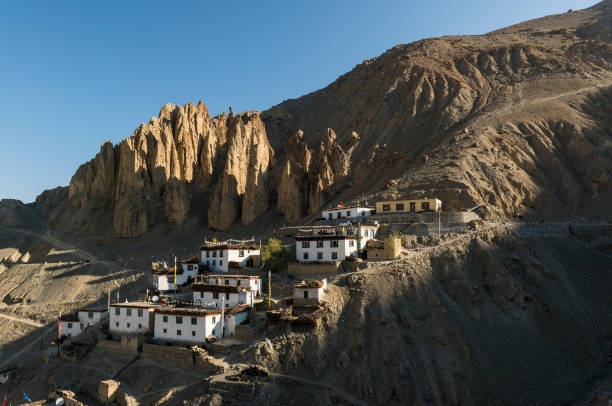
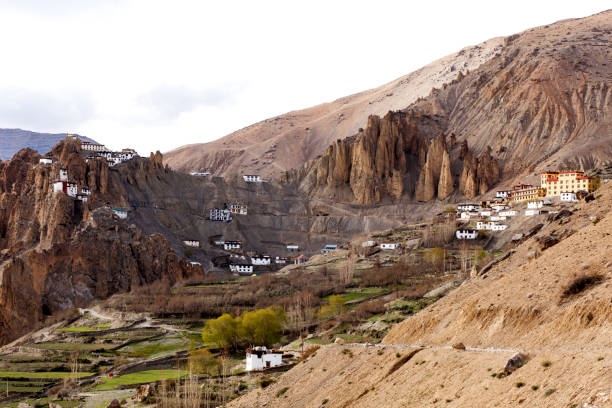
Day 10: Dhoksa – Langza
1 hour walk and here we are in the village of Komic (4500m), famous for its monastery, one of the highest in the world, and for its fossils. A little further, we reach Hikkim (4350m). After a small pass, arrival at the village of Langza.
Elevation +300m / -500m. 5 hours walk. Night in a tent at 4300m altitude near the village.
Day 11: Chau Chau Kang Nilda Base Camp
Day of hiking to the Chau Chau Kang Nilda base camp (4700m), whose summit peaks at 6300m. This site is full of fossils, evidence of the time when the Himalayas were still under the Thetys Sea.
Elevation +300m / -500m. 3 hours of walking. Return to the same camp.
Day 12: Transfer Langza – Kibber
Transfer by vehicle to the next stage (3-4 hours). Descent to the small town of Kaza, at 3600m at the bottom of the valley, before going back up to the Kye monastery (3900m). Visit and meeting with the monks, then our track takes us to Kibber, one of the highest villages in the world accessible by road (220 inhabitants). Night in a tent at 4100m altitude.

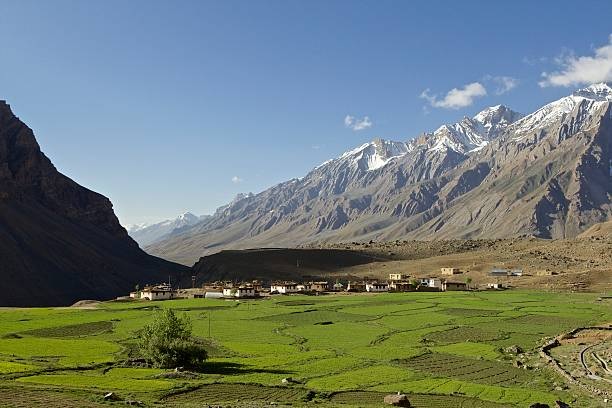
Day 13: Kibber – Tashigang
The path through the fields of barley and peas takes us to Gete (4280m), before reaching the small hamlet of Tashigang.
Elevation gain +400m / -100m. 3 hours of walking. Night in a tent at 4400m altitude near the village.
Day 14: Kanamo Peak Base Camp – Kibber
Through the mountain pastures where yaks graze, our trail gradually gains altitude to reach a plateau at 4820m where the Kanamo Peak base camp (5950m) is located. Picnic facing the great Himalayan peaks, then descent by another path directly to Kibber.
Elevation gain +400m / -700m. 5h to 6h of walking. Night in a tent at 4100m altitude.
Day 15: On the way to Manali (2 passes, 170km, 7h to 8h drive)
Departure by bus to Manali. After crossing Hansa then Lossar, the last village of Spiti, the road climbs to the Kunzum La pass (4550m), through a very mineral landscape. After a tribute paid by the driver to Kunzum Devi, the goddess of the place, descent to Gramphu (3300m) in the Lahaul valley, where we join the road coming from Ladakh. Long and winding climb to the Rothang pass or through the Atal Tunnel. At the pass (3975m), in clear weather, breathtaking view of the Chandra-Bhaga range on one side and the green Kullu valley on the other. The road descends in bends through flowering meadows and impressive gorges. Soon the first villages appear in the middle of pine, birch and poplar forests. Night at the hotel in Manali.
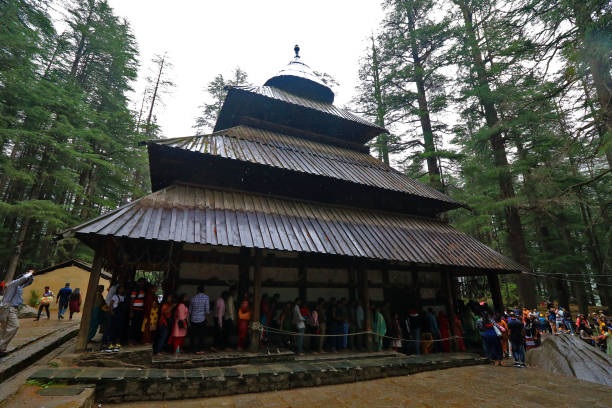

Day 16: Manali – Delhi
Free day in Manali. At an altitude of 1900m in the Kullu Valley, the small town of Manali is part of what the English called the “Hill Stations”, mountain resorts where British colonial officials came in summer to escape the stifling heat of the Ganges plain during the monsoon. Free visit of the Buddhist monastery, old Manali, where the Hindu temple of Manu is located (founded according to legend where Noah ended up with his Ark during the flood…), or even a walk to the Dhungri temple dedicated to the goddess Hadimba, built at 2050m in the middle of a cedar forest. In the afternoon, departure by comfortable bus for Delhi. (600km, 16 hours of driving). Night on the bus, through the states of Haryana and Punjab.
Last day
Day 17: Delhi
Arrival of the bus in Delhi in the morning. Welcome on arrival and transfer to the hotel (rooms available from noon). Visit the Bhai Temple (Lotus Temple) and the Humayun Tomb (approx. 2 hours). Free afternoon, or stroll in New Delhi in the district of Connaught Place passing by India Gate and the presidential palace. Dinner at the restaurant, night at the hotel.
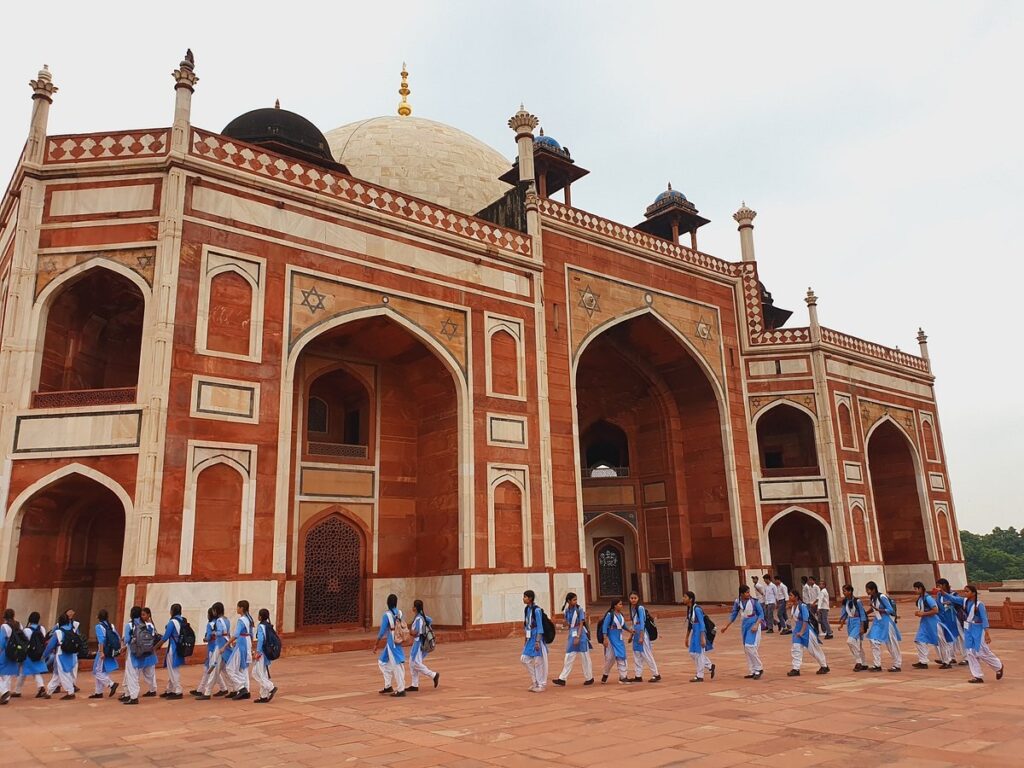
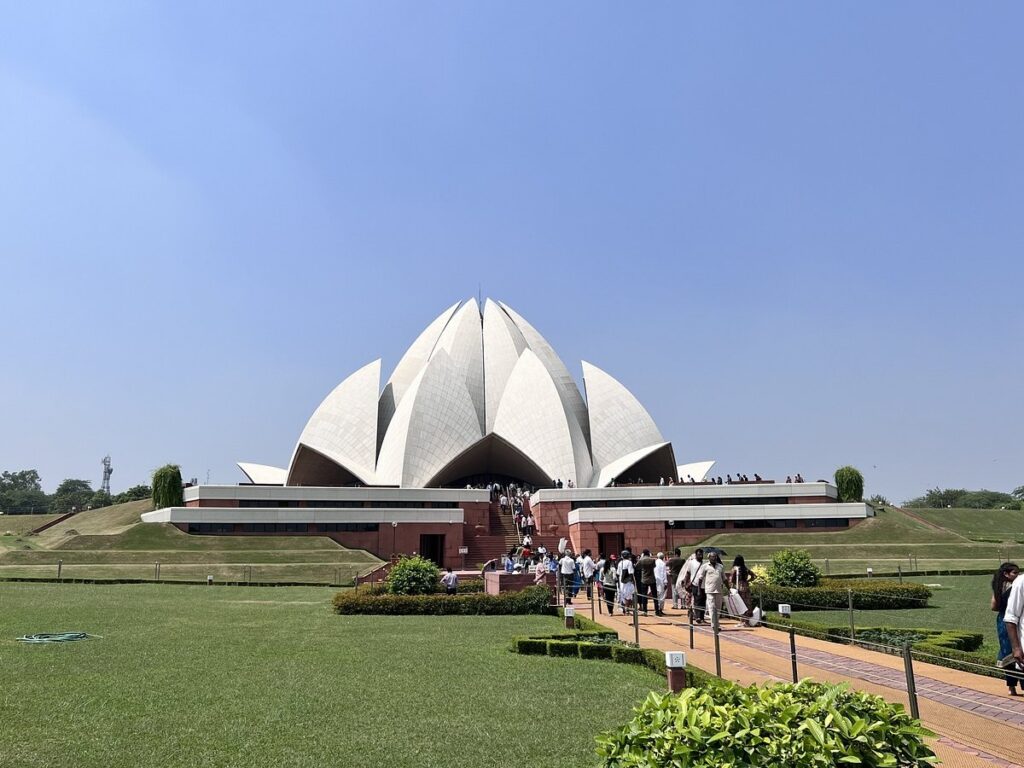
Day 18: Delhi – Return flight
Free time then transfer to the airport (approx. 1h15) and international return flight.
NB: depending on the airline used, the return flight may involve a departure from Delhi on day 17.
The schedule of this program is given for information purposes only. It may undergo modifications or adjustments, depending on technical criteria, safety requirements or current weather conditions. In this case, only the Delighted Journey supervisors are authorized to make the necessary decision(s).